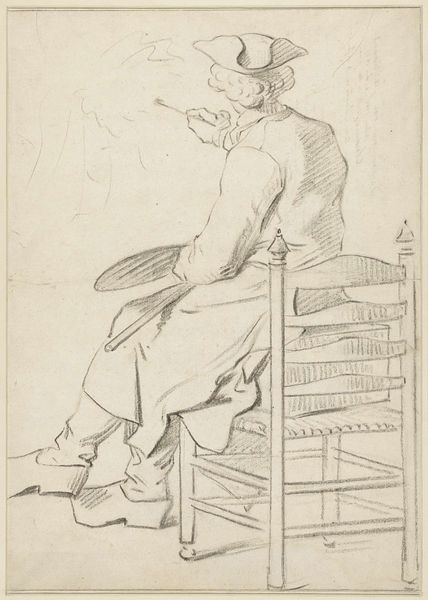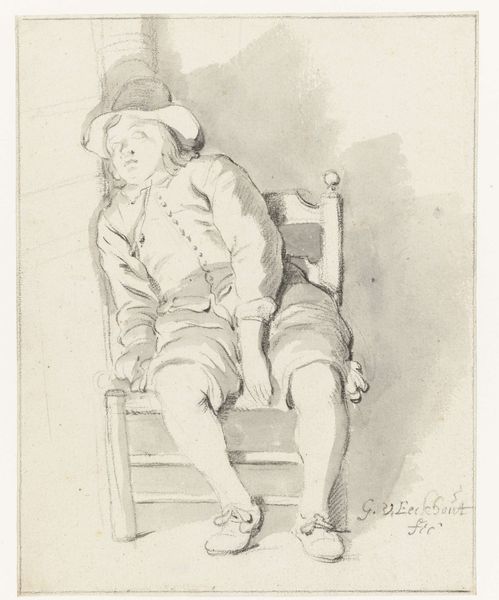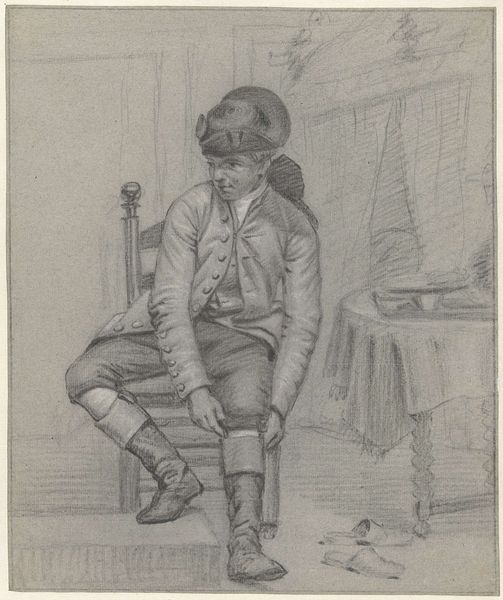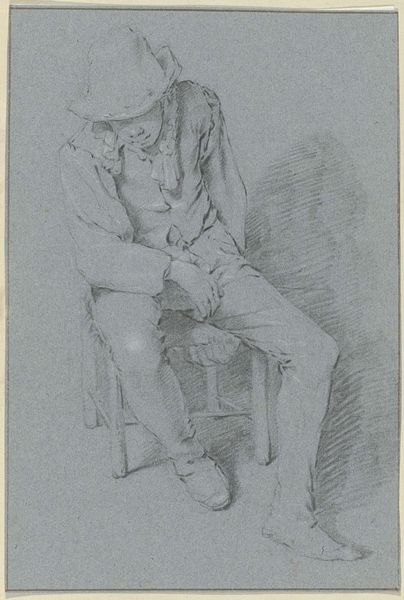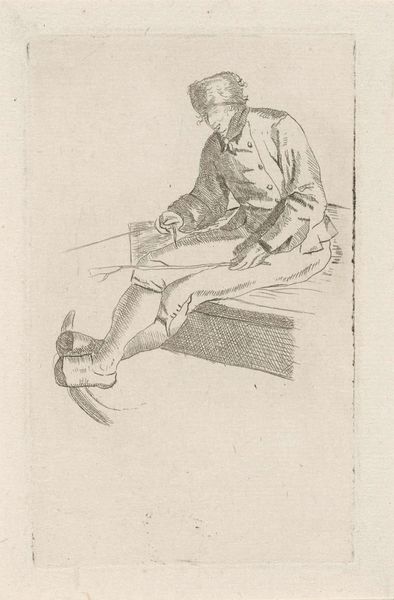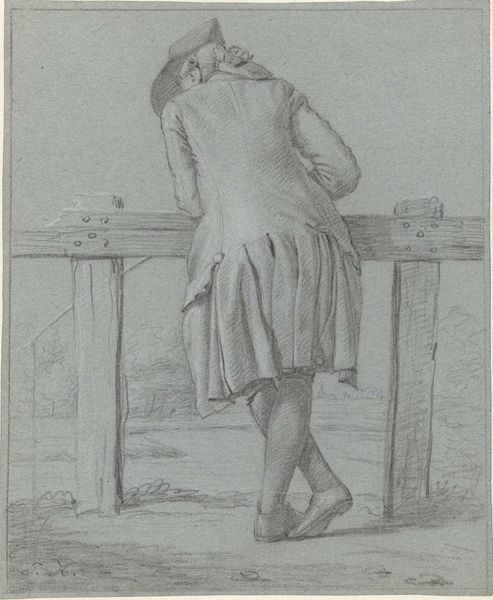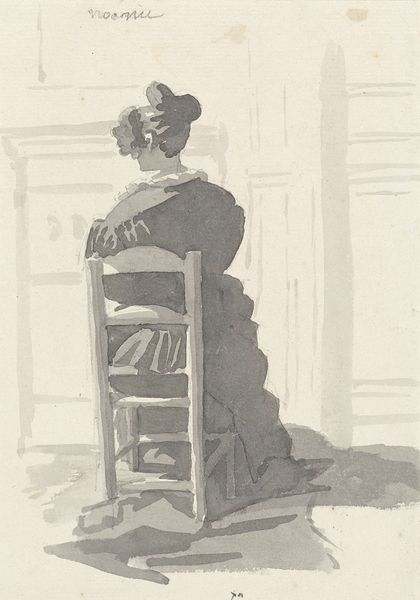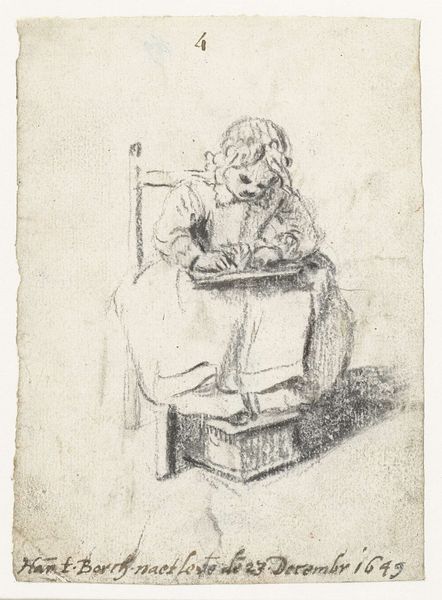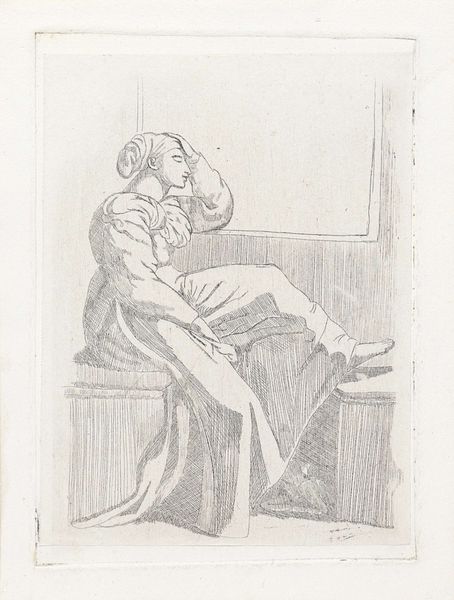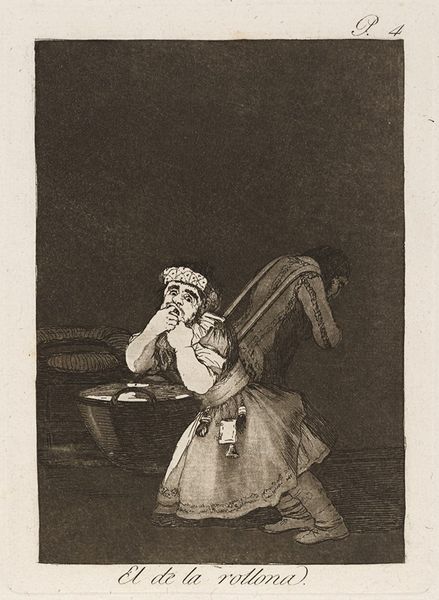
drawing, pencil
#
portrait
#
pencil drawn
#
drawing
#
pencil sketch
#
charcoal drawing
#
figuration
#
pencil drawing
#
pencil
#
portrait drawing
#
genre-painting
Dimensions: height 247 mm, width 190 mm
Copyright: Rijks Museum: Open Domain
Curator: Looking at this artwork, I feel transported to a simpler time, a moment captured with just a few strokes of a pencil. The neutrality in its tones gives the feeling of timelessness. Editor: Agreed. But before we drift away entirely, let's focus on the "how." This is "Boy Sitting on a Chair, Pointing Right," a drawing made by Taco Scheltema sometime between 1770 and 1837. The artist used graphite to render the boy, but what interests me is the visible, almost rushed quality of it. What sort of chair is that? And is the footstool a product of material wealth, or studio craft? Curator: Ah, the practical details. For me, it’s the gaze. He's not just sitting; he's *thinking*. The slight tilt of his head, the way his hand supports his chin. It’s the drama of contemplation rendered so plainly that captivates. I wonder what he’s imagining? It reminds me of trying to stay still for the annual school portrait day. I bet he was an impatient poser. Editor: Or a working-class child, hired to sit still for hours for pennies! That "drama of contemplation," as you say, could be plain boredom, maybe even resentment? I mean, consider the chair, constructed probably of common hardwoods: functional, unadorned. Compare it to the boy's shoes, and his somewhat tattered yet "fashionable" hat. Someone has clearly paid for the privilege to possess him, or at least, an image of him. The act of creation is never neutral, you know. Curator: True, art doesn't exist in a vacuum. But perhaps, just perhaps, it's also okay to let the image speak, allow the quiet intimacy of the drawing to resonate. Maybe that's all Scheltema wanted: to leave us with a puzzle rather than a fully rendered scene. And maybe Scheltema wanted his models to feel important in some way. I’d love to think of this lad seeing the artwork in progress. Editor: Well, whatever his thoughts, the tangible realities are still worth dissecting. Every line, every choice of material – they contribute to a bigger picture, reflecting both the boy's place in the world and the artist's as well. What’s in plain sight has been so painstakingly produced. Curator: And in that production, sometimes magic happens, regardless of intention. We can endlessly interpret the "what," but ultimately, it’s the "feeling" that stays with us. And for me, it's quiet awe at the beauty made with the simplest means. Editor: Alright, point taken. Perhaps focusing on the process allows us, sometimes, to marvel at the result even more.
Comments
No comments
Be the first to comment and join the conversation on the ultimate creative platform.
